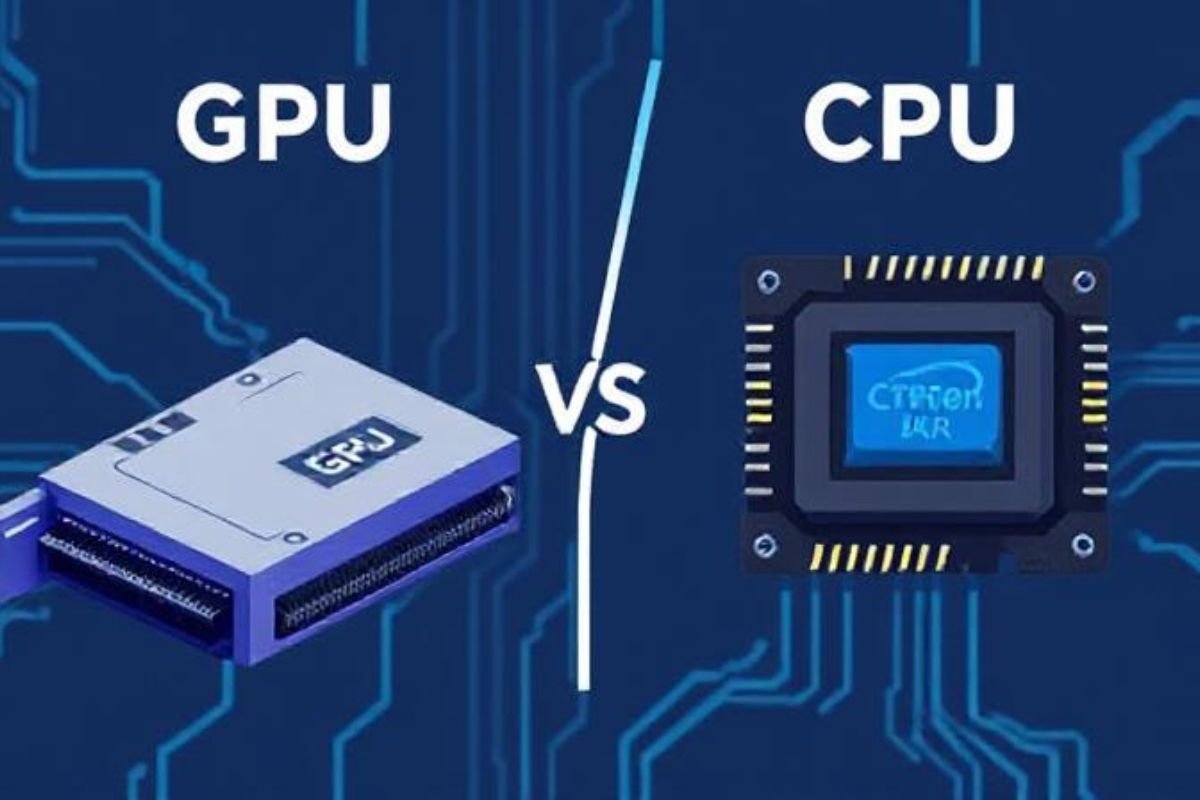So you’ve jumped into the arena of AI. Maybe you’re schooling neural networks, exploring gadget-studying algorithms, or just looking to understand how the magic works at the back of ChatGPT-like models. Now comes the burning query: Should you operate a CPU or a GPU for AI schooling?
Spoiler alert—it relies upon.
Let’s break all of it down, piece by piece.
Understanding the Basics
What is a CPU?
The Central Processing Unit (CPU) is the mind of your computer. It handles the whole lot from walking your OS to surfing the net. It’s designed for versatility, no longer always speed in one precise challenge. CPUs usually have fewer cores (4 to 32), optimized for sequential obligations.
What is a GPU?
The Graphics Processing Unit (GPU), at first made for rendering images, has taken the AI world by means of hurricane. Why? Because of its parallel processing energy. With hundreds of cores, it may deal with many operations simultaneously—best for education, deep mastering models.
Key Differences in Architecture
| Feature | CPU | GPU |
|---|---|---|
| Cores | 4–32 | Hundreds to thousands |
| Task Type | Sequential | Parallel |
| Memory Access | Optimized for latency | Optimized for throughput |
The Role of CPUs in AI Training
Strengths of CPUs
CPUs shine when it comes to:
- Preprocessing data
- Running logic-heavy tasks
- Handling I/O operations
Limitations of CPUs in Deep Learning
Training a large neural community on a CPU is like trying to row a boat throughout the sea—it’s viable, however painfully sluggish. CPUs warfare with:
- Matrix multiplications
- Convolution operations
- Handling large datasets correctly
Real-World Use Cases for CPUs in AI
Despite their barriers, CPUs nevertheless have their region in:
- Lightweight models
- Inference on side gadgets
- Model prototyping and trying out
The Power of GPUs for AI
Why GPUs Shine in AI Training
GPUs are cause-constructed for speed. Their architecture allows them to carry out:
- Massive parallel computations
- High-precision floating-point calculations
- Matrix operations across thousands of cores
CUDA Cores and Parallel Processing
NVIDIA’s CUDA cores (Compute Unified Device Architecture) are what give GPUs their edge. They enable:
- Parallelism at a big scale
- Optimized version of schooling performance
- High-pace computation with lower overhead
GPU Memory and Speed Benefits
Most AI frameworks like TensorFlow and PyTorch are optimized for GPUs. This manner:
- Faster batch schooling
- Better reminiscence usage
- Drastically reduced education instances
Training Time Comparison with CPUs
Example: Training ResNet50 on ImageNet
- CPU (16 cores): ~88 hours
- GPU (RTX 3090): ~6 hours
That’s not simply quicker—it’s game-converting.
Performance Comparison: CPU vs GPU
Speed Benchmarks
- CPUs cope with one task at a time—terrific for a popular purpose.
- GPUs crunch thousands of operations according to 2d—outstanding for AI.
Power Consumption and Efficiency
GPUs eat more energy, yes, however, they get the process done in a fraction of the time—making them extra green common.
Cost-Effectiveness
GPUs are extra steeply-priced prematurely, however:
- Save hours of training time
- Lower long-term fees on strength and cloud payments
Scalability for Larger Models
Need to scale to GPT-degree fashions? Forget CPUs. GPUs (or TPUs are your best bet for horizontal and vertical scaling.
Use Case Scenarios
Small-Scale AI Projects (CPU-Friendly)
- Basic regression models
- Small NLP projects
- Educational purposes
Large-Scale Neural Networks (GPU-Preferred)
- Computer vision with CNNs
- Language models like BERT, GPT
- Deep reinforcement learning
Hardware Recommendations
Best CPUs for AI
- AMD Ryzen 9 7950X
- Intel Core i9-13900K
- Xeon Platinum (for organisation)
Top GPUs for Machine Learning
- NVIDIA RTX 4090
- NVIDIA A100 / H100 (for records centers)
- NVIDIA RTX 3060 Ti (price range-friendly)
Desktop vs Cloud Options
Don’t have a deep wallet? Try:
- Google Colab
- AWS EC2 with GPU Instances
- Paperspace or Lambda Labs
The Future of AI Hardware
Role of TPUs and NPUs
- TPUs (Tensor Processing Units): Google’s opportunity to GPUs, tailor-made for TensorFlow.
- NPUs (Neural Processing Units): Built for AI obligations on mobile and embedded systems.
Is the CPU Becoming Obsolete in AI?
Not yet. CPUs nevertheless run the display outdoor AI-specific tasks. But in terms of uncooked training performance, the GPU is king (for now).
Conclusion
When it involves education AI models, there’s no actual competition—GPUs dominate the field. They’re quicker, greater efficient, and designed particularly for the sort of workload that AI schooling needs. CPUs nonetheless have their place, particularly for light workloads or preprocessing; however, in case you’re serious approximately AI, investing in a stable GPU is the way to go.
FAQs
Can I train AI with just a CPU?
Yes, however, it’ll be gradual. CPUs are first-class for small models or experimentation, however now not best for critical deep learning.
What GPU is nice for beginners in AI?
The NVIDIA RTX 3060 Ti or 4060 are exquisite access-degree options that stability price and overall performance.
Do I need both a CPU and a GPU for training?
Yes. The CPU nonetheless handles gadget operations, data loading, and preprocessing at the same time as the GPU handles version education.
How tons RAM is needed for AI schooling?
At least 16GB of device RAM is suggested, but 32GB+ is ideal if working with big datasets.
Are TPUs higher than GPUs?
For TensorFlow customers, yes. TPUs are optimized for positive deep gaining knowledge of responsibilities, and often outperform GPUs in cloud environments.
